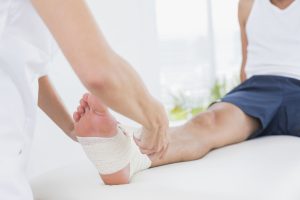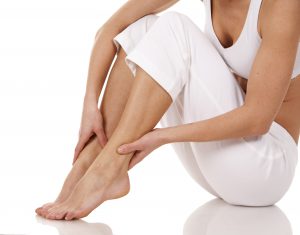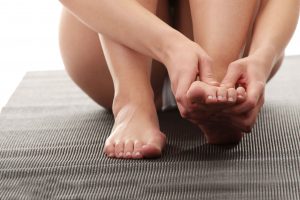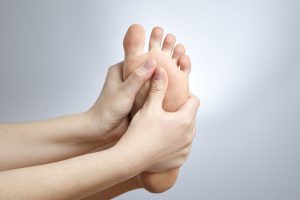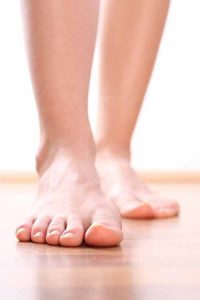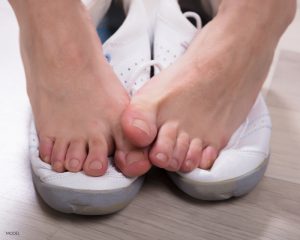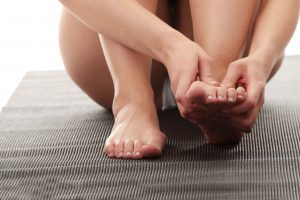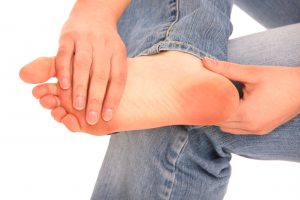Medically Reviewed by Dr. Rachel N. Verville
December 8, 2016
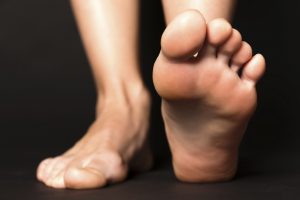 The “Achilles heel” is a common term for a weakness, and it’s no wonder since the Achilles tendon itself can be so easily damaged. This tendon – one of the largest ones in the body – stretches from your calf muscles to your heel. Achilles tendinopathy, formerly called Achilles tendinitis, occurs when over time repeated damage to the Achilles’ tendon builds up. Achilles tendinopathy causes pain, swelling and stiffness of the Achilles’ tendon, and has been known to keep athletes out of the game for days, weeks or even require them to undergo surgery. But what exactly causes these little Achilles tendon injuries to build up? How can Little Elm patients, especially athletes, avoid Achilles tendinopathy? Continue reading as we discuss some of the common reasons for repeated Achilles tendinopathy.
The “Achilles heel” is a common term for a weakness, and it’s no wonder since the Achilles tendon itself can be so easily damaged. This tendon – one of the largest ones in the body – stretches from your calf muscles to your heel. Achilles tendinopathy, formerly called Achilles tendinitis, occurs when over time repeated damage to the Achilles’ tendon builds up. Achilles tendinopathy causes pain, swelling and stiffness of the Achilles’ tendon, and has been known to keep athletes out of the game for days, weeks or even require them to undergo surgery. But what exactly causes these little Achilles tendon injuries to build up? How can Little Elm patients, especially athletes, avoid Achilles tendinopathy? Continue reading as we discuss some of the common reasons for repeated Achilles tendinopathy.
Why Do Some People Continue Injuring Their Achilles Tendon?
Some people just can’t seem to catch a break, and are always damaging their Achilles’ tendon. Common reasons for repeated Achilles tendinopathy include:
• Overuse of the Achilles Tendon.
If you’re always exercising, always playing sports and always on the go, you may be damaging your Achilles tendon without even knowing it. If you like to live an active lifestyle, avoid damage to your Achilles’ tendon by always properly stretching your calf muscles before performing any physical activity.
• Wearing Improperly Fitting Shoes.
Little Elm podiatrist Dr. Verville can’t stress enough the importance of wearing properly fitting shoes. The right shoes can prevent a variety of foot related injuries and conditions, including repeated damage to the Achilles’ tendon. Wearing high heels, for example, can place the foot and heel in an unnatural position, straining the Achilles’ tendon. And working out in unsupportive shoes can also damage the Achilles’ tendon. Little Elm podiatrist Dr. Verville recommends that when you buy any pair of shoes, you go to a Little Elm shoe store, have your foot properly measured by an experienced sales representative, and get their assistance picking out a shoe that fits and supports your foot properly.
• Inadequate Training or Exercising Techniques.
When you play a sport or perform an exercise, it’s important that you have proper technique. If you have a poor running technique, for example, if you always land on your feet awkwardly, you could be putting yourself at risk for damaging your Achilles’ tendon.
• Pushing Yourself Too Hard.
Sometimes when you’re in the middle of a workout, you want to push yourself to the max. But upping your game too much, too fast can cause you to injure yourself, especially your Achilles’ tendon. Make sure to slowly increase your activity over time, and never push yourself too hard, too fast.
How Do You Treat a Damaged Achilles’ Tendon?
If you’ve damaged your Achilles’ tendon, you will need to see a Little Elm podiatrist for treatment. Typically, you’ll be required to rest, ice the injury, wear compression bands, elevate your foot, take anti-inflammatory medications, perform prescribed stretches, perhaps wear orthotics and in rare cases, undergo surgery.
If you are in Little Elm, and you think you’ve damaged your Achilles’ tendon, don’t wait until the injury gets worse. Call Little Elm podiatrist Dr. Verville and RNV Podiatry today for a full examination at (214) 385-8822.




